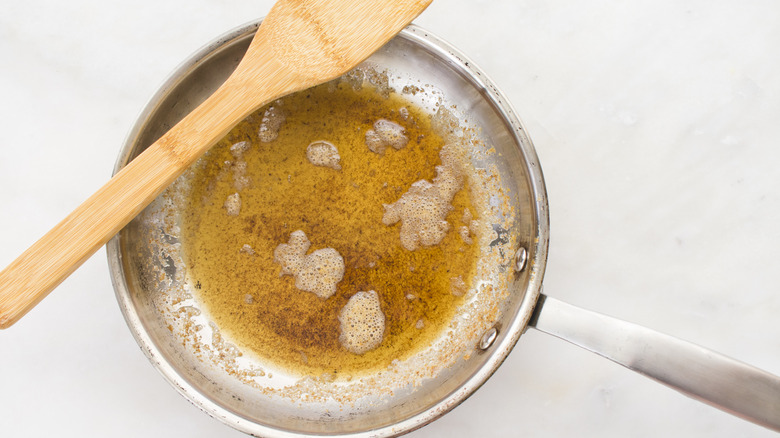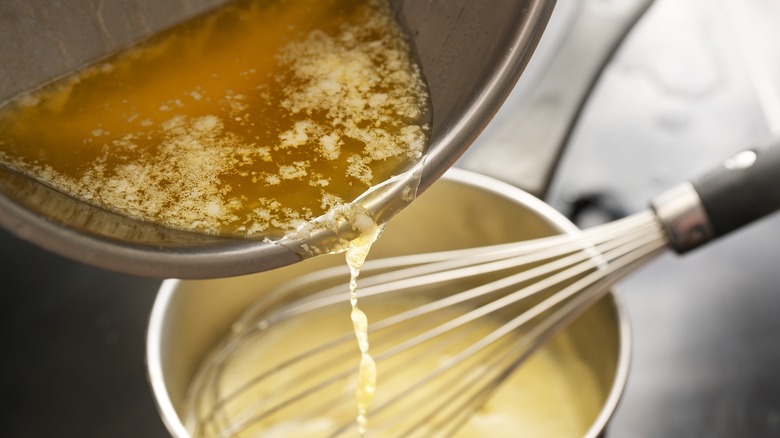Why You Might Not Want To Use A Dark Pan To Make Brown Butter
If you are new to the process, making brown butter can be intimidating, but it's an important skill to hone whether you are making brown butter shrimp pasta or brown butter banana bread. Making a "beurre noisette" (which is a fancy French phrase for brown butter) requires three things: butter, a pan, and your stovetop. However, not all pans are created equal, and you are going to want to shun using a dark pan or skillet. This is because when you are melting those fat solids down until they turn golden brown, you need to be able to detect that subtle change in color.
With a dark pan, it can be a challenge to see the contrast of color as your butter browns. If you can't see the color clearly, you might burn your butter or stop short of reaching the right shade of brown. This means that you should stay away from your favorite cast iron skillet or pans that have a Teflon coating.
Go for the heavy bottom
If you want your brown butter to turn out perfect, it is important to be thoughtful in your pan selection. In addition to opting for one that is light in color, you want to choose one that has a heavy bottom. This will ensure your butter and its milk solids don't burn as they are subjected to extreme heat. That said, if a dark pan is your only option, be certain to pick up some of the butter on a spoon as you stir to determine if it has browned properly and not burnt.
Using the wrong pan is just one mistake you might be making when browning butter. You also want to cut your butter into uniform pieces so that it melts in a consistent manner, helping you achieve that golden brown hue. But appearance isn't the only indicator that you want to rely on. Don't be afraid to take a little taste. When those dairy solids melt and those proteins and sugars break down, the flavor becomes nutty and sweet, while those floating bits take on a caramelized taste and smell.

